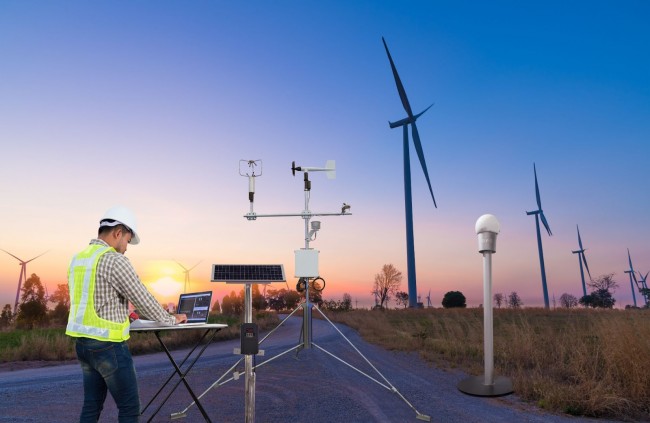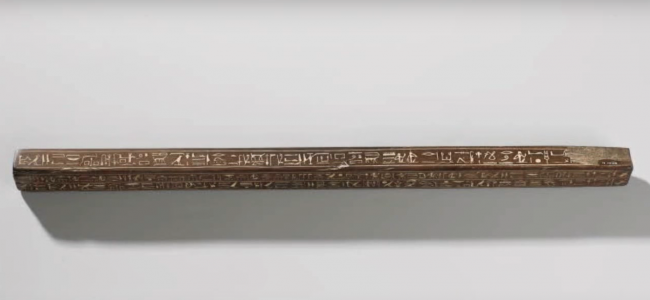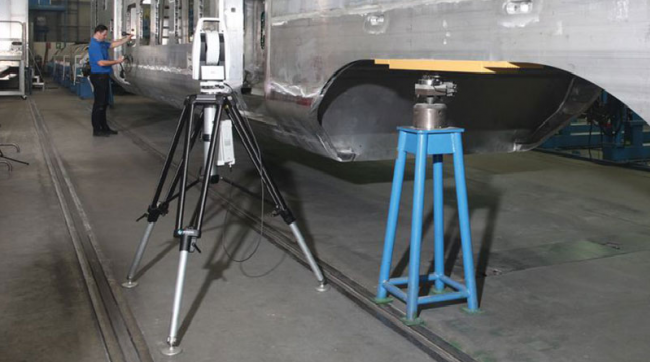Looking for a well-paid career where you’ll receive multiple offers from employers?
Do you like a mix of working at a desk and with your hands? Are you interested in understanding the technology behind how your tools work, not just how to operate them? Do you like the idea of being part of a renaissance in manufacturing with smart factories that are hyperflexible and self-adapting? A career in metrology can provide all that and more.

Metrology is the science of measurement (not to be confused with meteorology, the study of atmospheric sciences), and across the globe there is a severe, and growing, shortage of skilled metrologists. There’s been an increasing number of retirements by metrologists who began their careers during the 1970s and 1980s. Complicating things is the explosion of 3D measurement technologies, like non-contact laser scanning, photogrammetry, robotic inspection, and computed tomography scanning, that are now a routine part of advanced and smart manufacturing.
Metrologists do everything from quality control to calibration to research and development to onsite installation setup. Essentially, anything that involves precise measurement and the use of specialized machines and techniques requires metrology expertise—it’s way beyond using a simple set of calipers.

How it all started
Metrology has a fantastic history, beginning perhaps 8,000 years ago in the ancient world when agricultural development necessitated calculations to determine the storage and distribution of crops and the amount consumed by families. 5,000 years ago the Egyptians came up with the cubit (a unit based on the length of a forearm of the reigning Pharaoh). 2,000 years ago the Roman mile was established (a thousand paces of two steps each, and armies marching through uncharted territories would drive posts into the ground after each 1,000 paces). 1,000 years ago in medieval Europe, methods for calculating weights of precious metals and tradable commodities were established.

The oldest ruler in the world. From the treasure of King Tutankhamun, circa 1323 BC.
However, during all this history the technical inconsistencies and cultural variations of systems of measurement prevented any universal application of a single standard of units (your 1,000 paces are different from my 1,000 paces). This made it impossible for planners, engineers, chemists, physicians, and others to cooperate in any meaningful or widespread way. It would not be until the scientific revolution began in the 16th to 17th centuries that metrology would transition from length, time, and weight to a coherent system that could measure all aspects of nature. The core scientific principles of electricity, atoms, thermodynamics, etc. required this.
At this point, it was clear that there was a tremendous need for standardization for the purpose of making measurements and calculations easy to perform, understand, and communicate. This was further accelerated by the industrial revolution’s increased need for precise metrology standards.
Enter the French. In 1790 the French government, in the middle of the revolution, requested their Academy of Sciences to “deduce an invariable standard for all the measures and all the weights.” It was fully adopted in 1795. Almost a century later in 1875, after other nations started adopting the new metric system, the Metric Convention was convened in Paris, with 17 nations signing the treaty (including the United States, which led to the establishment of the National Institute of Standards and Technology in 1901). Finally! In fields of science, technology, industry, economics, and education had a single integrated system of measurement that could be employed.
Dimensional measurement
A core subset of modern metrology is dimensional measurement, often employed to ensure that parts fit together. If you ask experienced metrologists what they love best about their job, you’ll hear something like, “The sound of two parts fitting together in a perfect ‘click’.”
One of the more engaging areas of this work is portable metrology, where you bring your measurement tools to the item to be measured, rather than carting large parts to a dedicated centralized metrology lab. For example, in the aerospace industry metrologists bring their tools to the construction area of an aircraft wing and measure hundreds of dimensions to ensure fit, conformance, and quality.
The tools of the trade
Portable metrology is categorized into three main vertical products:
1. Articulated arm coordinate measuring machines
These devices are used for quality control, tool certifications, and CAD comparisons, where physical contact is a preferred method to ensure accuracy.

Faro articulating arm being used by the hit TV show “Orange County Choppers.”
2. Laser trackers
These devices are useful for measuring very large objects with extreme accuracy, such as aircraft wings and floor layout of large machine tools.

Leica laser tracker allows the metrologist to take numerous measurements at a distance.
3. Hand-held 3D optical scanners
These devices are used in prototyping, design, quality control, and testing on objects of any size.

Creaform’s 3D scanner allows scanning of parts of any size and complexity.
Training to become a metrologist
There’s no question that future metrologists need to acquire new knowledge and skills. This can run from company-sponsored apprenticeship programs to vocational training to college programs.
Newport News Shipyard has one of the nation’s best and well-known metrology apprenticeship programs. Technicians use metrology equipment for precision setting, alignment, and dimensional verification of structures, weapons systems, machinery, and propulsion systems.
A number of two- and four-year colleges offer a wide variety of educational and training programs. On a graduate level, the University of North Carolina is well-respected for its excellent program.
Because of the shortage of skilled metrologists, many companies find themselves better off if they provide on-the-job training in the use of portable metrology tools. Not exactly an apprenticeship, but if you can demonstrate some core math skills, are comfortable with technology, and have a sense of spatial awareness, it’s an investment in you that an employer would be wise to make.
Many of the original equipment manufacturers (OEMs) offer online training, such as Faro Academy. Other OEMs simply post recorded webinars on their website. The recently launched 3DMU (3D Measurement U), in partnership with the Coordinate Metrology Society, aims to create broad-based metrology video training for the entire industry, and not focused on any one OEM or technology.
NIST (National Institute of Standards and Technology), is a physical sciences laboratory and non-regulatory agency of the United States Department of Commerce. Its mission is to promote American innovation and industrial competitiveness. They have an entire section devoted to metrology and many training programs. NIST’s counterpart in the UK is the NPL (National Physical Laboratory), which offers a variety of excellent training.
Where to find out more
To find out more about portable metrology as a possible career, check out available resources on the subject. Here’s our three top recommendations:
The Coordinate Metrology Society (CMS) is at the absolute center of the profession of portable metrology. Since 1984 they have sponsored an annual conference that draws a worldwide audience. If you’re interested in becoming a metrologist, they’ll help you attend their conference for free.
Quality Digest, an industry publication for quality professionals, is one of the best and free sources of information about portable metrology. Quality Digest reports on multiple dimensions of metrology, including the technology, products, management, and especially careers. They’ve been particularly active in covering “women in metrology,” and highlighting the achievements of and growing interest in women in the industry.
Bottom line
There is no foreseeable end in sight for the increasing need for skilled metrologists. If you’re looking for job security, a career in metrology offers this in abundance.
Metrology has been woven into manufacturing since humans first learned to shape a wheel, and it's not going to go away. With new tech advancements, metrologists have an opportunity to add to this science's body of knowledge and everyday application. You can become part of this by studying the subject, deciding which aspect you'd like to pursue, then taking advantage of the training offered by labs, governments, manufacturers, and educational bodies.





